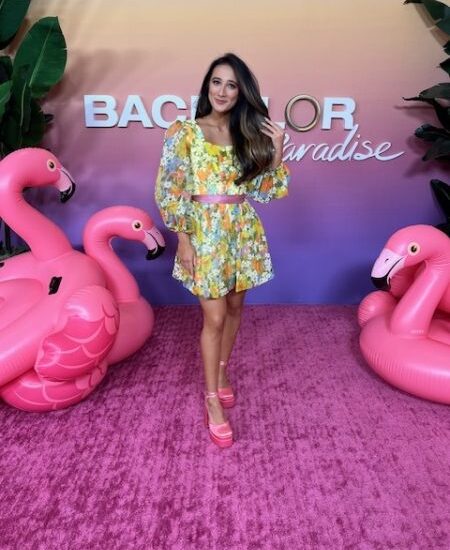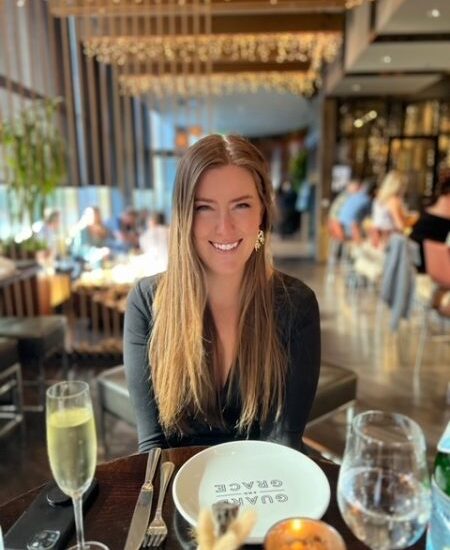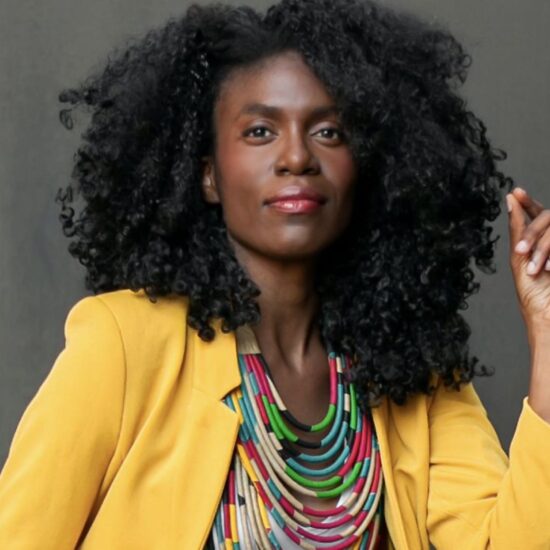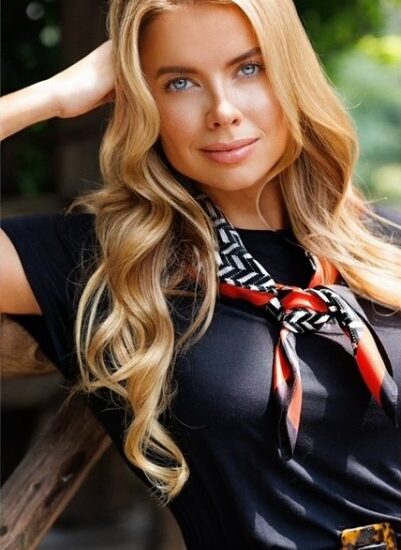![“Hellier” Investigator Connor J. Randall Discusses The Stanley Hotel and Co-Creating the Estes Method [Interview] “Hellier” Investigator Connor J. Randall Discusses The Stanley Hotel and Co-Creating the Estes Method [Interview]](https://timewarnerent.com/wp-content/uploads/2023/03/Hellier-Investigator-Connor-J-Randall-Discusses-The-Stanley-Hotel-and.jpg)
Welcome back to DEAD Time. This month we’re getting technical with paranormal investigator and co-creator of the Estes Method, Connor J. Randall, who you know from Hellier and Spirits of the Stanely. If, like me, you’ve fallen down the Hellier rabbit hole, you know there’s no coming back. The wildly addictive paranormal docuseries follows a team of paranormal investigators on what begins as a search for potential goblins in Kentucky but turns into a much more complicated mystery. After receiving a couple of bizarre emails, paranormal researchers Greg and Dana Newkirk assemble a team which includes filmmaker Karl Pfeiffer and paranormal investigator Connor J. Randall and the team heads to Kentucky in search of answers.
If you’ve seen Hellier, you’ve seen the team use a tool called the Estes Method to attempt to communicate with the entities they are in search of. In 2016, while working at the Stanley Hotel, paranormal investigators Connor J. Randall, Michelle Tate, and Karl Pfeiffer created the Estes Method and now it’s widely used on paranormal television shows and by teams all around the world.
Bloody Disgusting was thrilled to have the chance to talk with Connor J. Randall about working at the famous Stanley Hotel, creating the Estes Method, Hellier season 3, and a lot more.
Bloody Disgusting: A lot of people have gotten to know you from your work on Hellier, but before that you had the web series Spirits of the Stanley. When did you first become interested in the paranormal and why?
Connor Randall: Like many, that interest sort of stems from childhood; from having a couple of experiences, but nothing that was hugely shocking. Just having an early fascination, which was compounded by living so close to the Stanley Hotel. Being there regularly and going there a few times as a child, the idea of ghosts was something that’s not far-fetched, but actually there. This was really exciting. When the show Ghost Hunters came along I already loved playing with my dad’s old camcorder and remaking ridiculous Star Wars movies and things like that with my siblings when I was a little kid. We started going up to the Stanley Hotel and pretending like we were making a ghost hunting TV show, but we were 12 years old [laughs]. Being able to do that sort of stemmed the interest and that’s where I got my first job.
I was seventeen and got a job as a concierge at the Stanley Hotel and just wanted to be nearby the cool ghost stories. The place draws you in, so that was my first job. Then I kind of moved up from there. I became one of their history tour guides and then when they started to get a little more ghost inclined, I became one of the ghost tour guides. I helped with the tours and eventually they started opening up overnight paranormal investigations. That was an advanced tour and that’s when I was able to transfer over to doing that. Ghosts are definitely the gateway drug for a lot of people like me.
BD: During your time as a paranormal investigator at The Stanley Hotel, you and fellow investigators Karl Pfeiffer and Michelle Tate created a new technique to aid in paranormal investigations called the Estes Method, using a spirit box, blindfold, and headphones. How did the three of you first come up with the idea for the Estes Method?
CR: I think like a lot of ideas, the Estes Method was born out of a little bit of boredom and wanting to innovate. Karl, Michelle, and I were there three or four nights a week; it was basically a regular job. We were hosting paranormal investigation tours of the Stanley Hotel, so people would pay to spend seven hours ghost hunting the hotel. We would always take them on the regular ghost tour and then it would be “after hours” from 9pm to 1am. We would take groups of ten or so around to different areas. We had some basic equipment, we had some K2 meters, and we had a spirit box, and things like that. We just enjoyed telling people ghost stories and potentially looking for ghosts and kind of showing them the basics. It was almost like a crash course in investigating ghosts. Then it would be after hours and because I lived an hour away there were often times when I would stay at the hotel. Karl and Michelle didn’t live too far away, so we would decide to stay afterwards and hang out by ourselves after the members of the public went home.
When we were hanging out by ourselves, we still wanted to investigate and we sort of got it in our heads that the ghosts liked to hang out with us; at least we liked to think so. It was kind of fun to hang out and say, “Okay, guys. You know us. We’re here every night.” And then we’d hopefully try to interact with the spirits that way. We had started to film the time that we spent after the tours went home. Karl thought it would be a great way to advertise our little tours and we thought it would be a fun way to document a long-term paranormal study. It’s pretty rare to be in a location over and over again every night for years at a time and that’s what we were doing. We started to keep track of all sorts of things. We would keep track of the weather on interesting nights and the phase of the moon or what day of the week it was, trying to see if there was some sort of pattern behind the activity. So, we initially had our camcorders and were filming that sort of work after hours.
Then one night Karl was just sitting there, and he said, “You know, the spirit box has a headphone jack in it. Why can’t we just plug headphones into it and listen? Maybe it will be different.” That simple statement sort of turned into, “Okay, what if the person listening can’t hear what everybody else is asking?” That becomes interesting. We tried it and got maybe a couple of interesting results and then decided to amplify it from there. We decided to bring in equipment that makes it absolutely impossible for somebody to hear what everyone outside is listening to. I play drums, so I had these giant drum headphones that are made for studio drummers, and they block out 23 decibels of sound around you. Now you definitely can’t hear all the noises things around you. You also want to make sure people can’t read lips or see the interactions or what’s going on, so let’s put a blind fold on them. So, that’s how the method was just really quickly born, in a couple of weeks back in 2016. What’s really cool is that that was actually filmed on camera. People can actually watch it and see the “invention” of the Estes Method.
BD: How has the Estes Method proven to be helpful on investigations you’ve been involved with?
CR: The method is helpful in that if you’re doing it correctly, the person who is the receiver is incredibly shut off from outside influence. If somebody is shut off from outside influence, hopefully, that person doesn’t even really know any of the stories of the location that they’re at either. That’s sort of the idea. The Estes Method is the best attempt that I can think of in modern day paranormal investigation to rid ourselves of confirmation bias. It places somebody in the location, but that person is blinded, hopefully not only to what’s around them because of the equipment, but to the stories that are around them as well, thereby making any results triply impressive. Because this unknown consciousness is entering into the person who is speaking through those receiver headphones. Then we’re able to sort of say what might actually be going on without a tainted view of these scary stories and history that often kind of bogs down the paranormal field in some ways.
BD: I think the Estes Method is such a fascinating tool in paranormal investigations. A lot of other paranormal groups have started using the Estes Method in television shows and web series. How does it feel to see so many people in the paranormal community embrace something you helped to create?
CR: It is kind of crazy. I’ve pinched myself a little bit because a bunch of these people who I grew up watching on TV are now regularly utilizing our method. It’s very cool and hopefully it adds something new and exciting. I understand just from a production standpoint that it’s interesting to look at, and it’s easy to do. And frankly, this goes not just for paranormal television, but for anybody I see doing it, I want to make sure that it’s all being done correctly. So, that’s part of it too. The major television shows usually mostly get it right in terms of the equipment, but sometimes you have people wearing headphones that aren’t soundproof. Or you have people who are not sort of following very good protocol asking the questions, or they’re leading themselves down a path. Or that person already knows what kind of story they’re looking for. That kind of taints the view of the person who is listening, which isn’t really what we ideally have in mind. Regardless, every time I turn on the TV it seems like it’s there and it’s flattering. It’s very cool.
BD: Some of the results you’ve gotten using the Estes Method on the Hellier case, for example, seem to make too much sense to be considered coincidences. And Hellier was based, in part, on a series of synchronicities. What are your thoughts on the concept of synchronicities?
CR: I think of synchronicities as number one, really only meaningful to the person who is experiencing them and that’s hard to convey and it’s hard to show the impact if you’re just a third party watching somebody else go through something like that. But when you’re a person experiencing them you sort of understand it a little bit better and I’m sure a lot of people have. I think additionally of synchronicities sort of as checkpoints alongside some sort of cosmic path. I don’t necessarily think that something is leading us down a straight and narrow road.
Sometimes I go back and forth and sometimes I kind of think of it that way. But I almost think of it as time itself being a confusing concept and having these ideas as we’re following along this path, as we’re getting intertwined in all of the high strangeness and beautiful oddness of the world, and synchronicities happen when you’re in tune with something larger.
BD: You’re currently working on the Haunted Objects Podcast with Greg and Dana Newkirk. Can you tell me a little bit about that?
CR: Greg and Dana asked me to help them produce and create their new podcast, which is the Haunted Objects Podcast. Every episode centers around a particular haunted object. Greg and Dana have been collecting items for years but they really collect them mostly as kind of a charity service. They’re not going out seeking a lot of stuff that’s labeled as haunted or something like that. The stuff that they get really is stuff that’s sent to them from people who are scared of it. So, they’re like, “Well, if you’re afraid of it, I’ll take it off your hands.” Greg and Dana have amassed this enormous collection in their house and they take it on the road sometimes. I think when Covid hit, some of the road shows were a little less frequent, and Greg and Dana still wanted to share these objects with the world and their cool stories. So, that’s kind of when the idea was sparked.
Now what we do is every other week we dive into the story of a haunted object from the collection and not only tell the story of the object, but the story of the idea surrounding it, why it’s scary. We talk about antique, spiritualist equipment and spirit slates and we tell the story of not only the séance that took place with these spirit slates, but also the spiritualism movement in general. When we talk about this haunted clown doll that they, we’re talking not just about the clown doll, but about why people are afraid of clowns and where does this stem from. We take everything with a touch of humor and really deep interest and each episode is a real nice dive into something totally different from the last episode.
BD: Hellier fans want to know if we’re getting a Season 3. Can you give me an update on that?
CR: It’s in our mentions all the time [laughs]! Hellier 1 and 2 were released very quickly back-to-back even though they took us four years to sort of put together in totality, and Hellier 3 is the next step in that. So, we’re working on it but it’s going to take time. We’re not actors on a filming schedule on set, we kind of have to see what the phenomena gives us. Then what we do is we each head down our different paths and then we meet back together as a group and compare and contrast and then figure out what the next steps are together. So, that takes time, but I can say that we are working on it.
Catch up on season 1 and 2 of Hellier free at https://www.hellier.tv/ and tune into the Haunted Objects Podcast to hear Greg, Dana, and Connor discuss the haunted objects in the Newkirk’s collection. Hellier is also streaming on the BD-powered SCREAMBOX.


















